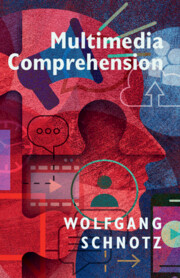Book contents
- Multimedia Comprehension
- Multimedia Comprehension
- Copyright page
- Dedication
- Contents
- Preface
- Chapter 1 Introduction
- Chapter 2 A Short History of Multimedia Sign Systems
- Chapter 3 Basic Forms of Representations
- Chapter 4 Comprehension of Text
- Chapter 5 Comprehension of Pictures
- Chapter 6 Integrative Comprehension of Texts and Pictures
- Chapter 7 Quasi-symbiotic Relations between Text and Picture Comprehension
- Chapter 8 Beyond Comprehension
- Chapter 9 Practical Implications
- Concluding Remarks
- References
- Index
Chapter 7 - Quasi-symbiotic Relations between Text and Picture Comprehension
Published online by Cambridge University Press: 16 February 2023
- Multimedia Comprehension
- Multimedia Comprehension
- Copyright page
- Dedication
- Contents
- Preface
- Chapter 1 Introduction
- Chapter 2 A Short History of Multimedia Sign Systems
- Chapter 3 Basic Forms of Representations
- Chapter 4 Comprehension of Text
- Chapter 5 Comprehension of Pictures
- Chapter 6 Integrative Comprehension of Texts and Pictures
- Chapter 7 Quasi-symbiotic Relations between Text and Picture Comprehension
- Chapter 8 Beyond Comprehension
- Chapter 9 Practical Implications
- Concluding Remarks
- References
- Index
Summary
Text and pictures serve different purposes in multimedia comprehension. Conceptual processing of texts and pictures results in propositions, whereby text-based propositions and picture-based propositions specialize in different kinds of information. These propositions are merged into an overarching conceptual semantic network guiding mental model construction. The construction process receives descriptive guidance by text-based and picture-based propositional representations as well as depictive guidance by perceptual representation of pictures through structure mapping. Because texts are more constrained in terms of processing order, they can provide more conceptual guidance through a subject matter than pictures. A distinction can be made between initial model construction and adaptive model specification. Initial model construction aims at general coherence formation; adaptive model specification aims at selective processing of task-relevant information. Initial mental model construction is more likely to be text-driven than adaptive mental model specification, while adaptive mental model specification is more likely to be picture-driven than initial mental model construction.
Keywords
- Type
- Chapter
- Information
- Multimedia Comprehension , pp. 147 - 171Publisher: Cambridge University PressPrint publication year: 2023



